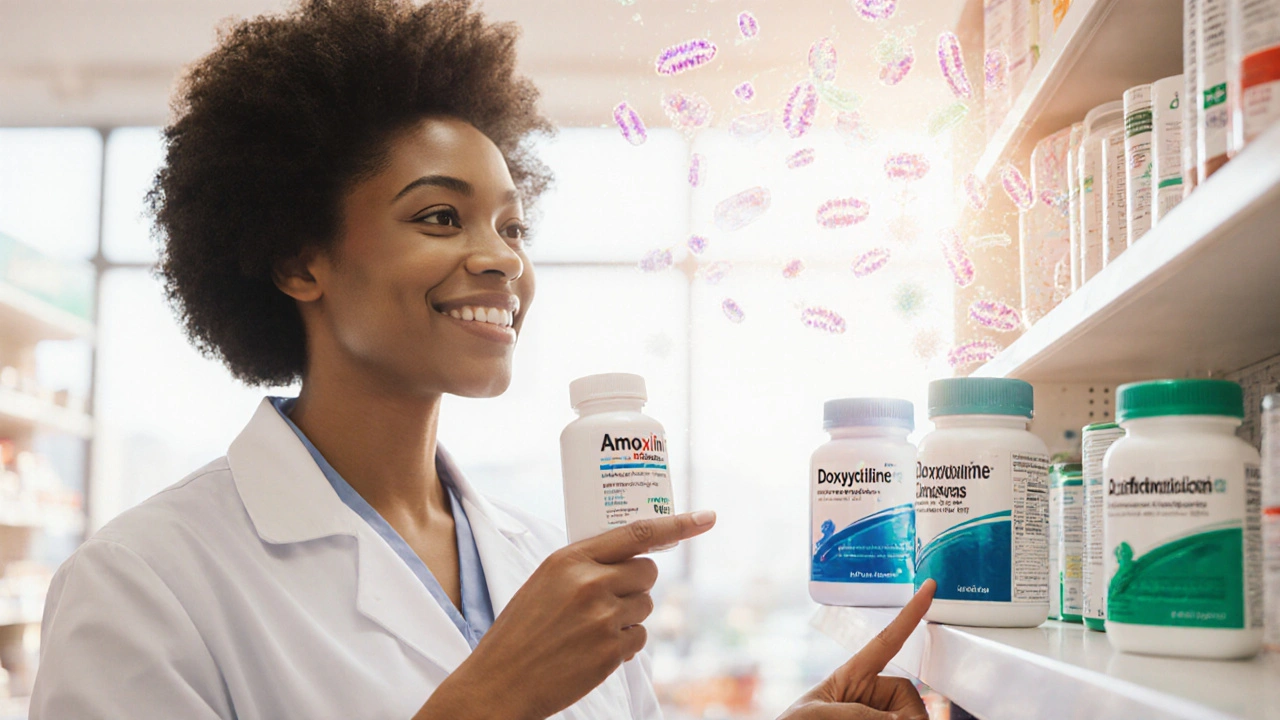Antibiotic Alternatives: Natural & Innovative Options
When looking at antibiotic alternatives, non‑antibiotic approaches used to prevent or treat bacterial infections. Also known as non‑antibiotic therapies, they have become more popular as resistance to traditional antibiotics rises. People start asking for options that don’t add to the resistance problem, that fit into everyday life, and that often have fewer side effects. In this space, probiotics, live beneficial bacteria that support gut health, and herbal remedies, plant‑based extracts with antimicrobial properties are two of the most talked‑about categories. Understanding antibiotic alternatives can help you choose safer ways to fight infection without adding to the resistance crisis.
How Non‑Antibiotic Options Work
Think of antibiotic alternatives as a toolbox where each tool targets bacteria in a different way. Probiotics, good microbes that crowd out harmful bacteria work by balancing the microbiome, strengthening the gut barrier, and even signaling the immune system to stay on guard. Studies show that certain strains cut down the risk of travel‑related diarrhea and can shorten the course of some respiratory infections. Another emerging class is antimicrobial peptides, short protein fragments that kill bacteria by breaking their cell membranes. These peptides are part of our natural immune response and are now being explored as topical creams or inhaled sprays. The semantic link is clear: antibiotic alternatives encompass both microbiome‑supporting agents and direct‑acting molecules, and they require a solid understanding of the infection site to be effective. When you pair a probiotic regimen with a peptide‑based ointment for a skin injury, you’re combining two non‑antibiotic strategies that reinforce each other, reducing the chance that harmful bacteria take hold.
The third big player in the alternative arena is herbal remedies, plant extracts like tea tree oil, oregano oil, and goldenseal that have antimicrobial activity. Many of these herbs have been used for centuries, and modern labs are confirming their ability to disrupt bacterial cell walls or inhibit toxin production. For example, oregano oil contains carvacrol, which can damage the membranes of Staphylococcus aureus, a common cause of skin infections. Alongside herbs, phage therapy, the use of viruses that specifically infect bacteria is gaining traction, especially for hard‑to‑treat infections like those caused by multidrug‑resistant Pseudomonas. Phages target a single bacterial species, leaving the rest of your microbiome untouched, which is a big win compared to broad‑spectrum antibiotics. The relationship here is that antibiotic alternatives require careful matching of the right tool to the right bug; you wouldn’t use a phage against a viral infection, just as you wouldn’t rely only on a herb for a deep systemic infection. Across the board, the common thread is that these options aim to control bacterial growth while preserving the body’s own defenses. Below, you’ll find a range of articles that break down each alternative, compare them to traditional antibiotics, and give practical tips on when and how to use them safely.
Compare Amoxil (amoxicillin) with popular antibiotic alternatives. Learn differences in spectrum, dosage, side effects, resistance risk, and cost to pick the right treatment.
Continue reading...






